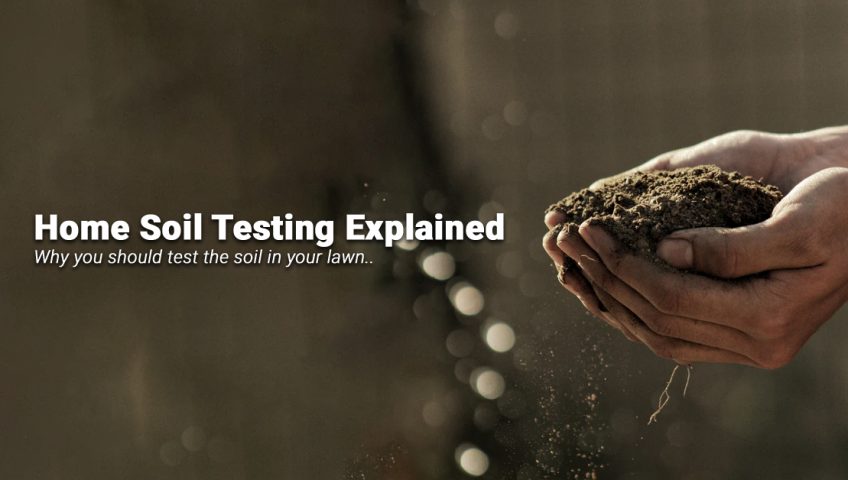Home lawn soil testing is the best way to find out exactly what is going on with your soil. Soil tests are used to measure the nutrients that your soil provides to plants and recommend corrective steps for any problems. Performing a soil test will provide you with helpful information and insights into establishing lawn fertility goals. Testing should be done regularly as part of your lawn maintenance schedule.
How to Sample Your Soil for Testing
To perform a home lawn soil test, you will need several soil samples from your lawn. You can either test several spots independently or mix soil from around the lawn to get a general idea of how the whole lawn is doing.
Soil samples should be collected about two to three inches below the surface of the soil. Use a trowel or a spoon to collect the sample. You should not touch it with your hands as residue from your body could affect the results.
Put each sample in a separate container and label it with where it came from. For home lawn soil testing, we recommend taking a sample from every corner of the lawn. You should also collect a sample from the center as well as any place that is different from the rest of the lawn, such as a sunny spot or a spot that does not drain very well.
What a Soil Test Measures
Home lawn soil tests measure a variety of nutrients that are essential for your lawn. Most commonly, results found in testing kits include the pH level of the soil, as well as levels of nitrogen, phosphorus, and potash or potassium.
pH Levels
The pH level of your lawn is essential because all plants grow best at a specific pH level. If the pH level is too high or too low, your grass will not be able to use the nutrients in the soil and thus will not grow as strongly as it could.
The ideal pH for different kinds of grass varies, but most grasses like acidic soil. If your pH needs to be higher (more alkaline) you can add hydrated lime or even ashes from your fireplace. To lower pH (more acidic), ground rock sulfur is a popular additive. However, sawdust, composted leaves, and leaf mold are also beneficial for lowering the pH of your soil.
Nitrogen
Your soil needs to have the correct amount of nitrogen because nitrogen will make your grass leafy and full. If there's not enough nitrogen in your soil, your lawn will be more susceptible to pest infestation and disease. However, if there is too much nitrogen, the focus is on green growth at the expense of flowers and seeds. While this is not really a problem for lawns, it is possible to have too much of a good thing.
Phosphorus
Phosphorus is especially useful if you are planning to sod your lawn because it stimulates root growth, gives plants a healthy start, and makes them mature faster. Phosphorus also helps plants to bloom and form seeds. While this is not so vital in the lawn, it is useful in other parts of the garden.
Potassium
Potassium or potash helps achieve early root formation, which is vital when growing grass from seed. Potassium also helps to protect your plants from drought and frost and will help make your grass stronger.
Using Home Soil Test Results
Understanding the nutrients in your lawn is only half the battle. Correctly applying the necessary corrective action based on the test results can be the deciding factor of your lawn’s health. With over 35 years of experience transforming lawns, our eight-treatment lawn plan is the best way to achieve a stronger, healthier lawn year-round! Learn more about our treatment plans or give us a call at (215) 364-7000 for a FREE quote!
